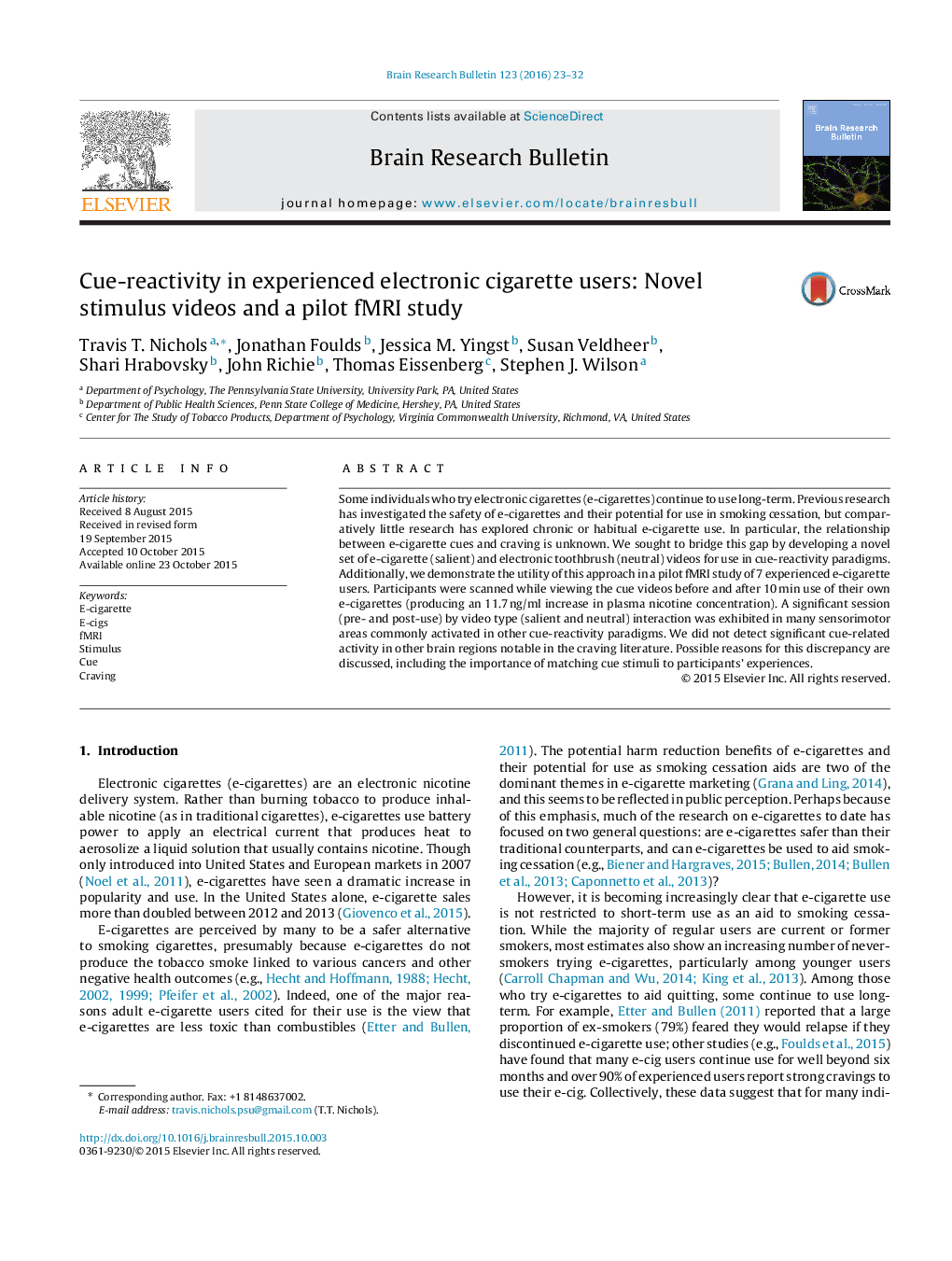| Article ID | Journal | Published Year | Pages | File Type |
|---|---|---|---|---|
| 4318611 | Brain Research Bulletin | 2016 | 10 Pages |
•We developed novel stimulus videos for use in e-cigarette craving research.•We piloted these videos on experienced users in fMRI before and after e-cigarette use.•Cue reactivity in sensorimotor and memory brain areas increased after e-cigarette use.•Verbal urge ratings did not increase in response to cue exposure.•Match between cues and participants’ own e-cigarettes may be especially important.
Some individuals who try electronic cigarettes (e-cigarettes) continue to use long-term. Previous research has investigated the safety of e-cigarettes and their potential for use in smoking cessation, but comparatively little research has explored chronic or habitual e-cigarette use. In particular, the relationship between e-cigarette cues and craving is unknown. We sought to bridge this gap by developing a novel set of e-cigarette (salient) and electronic toothbrush (neutral) videos for use in cue-reactivity paradigms. Additionally, we demonstrate the utility of this approach in a pilot fMRI study of 7 experienced e-cigarette users. Participants were scanned while viewing the cue videos before and after 10 min use of their own e-cigarettes (producing an 11.7 ng/ml increase in plasma nicotine concentration). A significant session (pre- and post-use) by video type (salient and neutral) interaction was exhibited in many sensorimotor areas commonly activated in other cue-reactivity paradigms. We did not detect significant cue-related activity in other brain regions notable in the craving literature. Possible reasons for this discrepancy are discussed, including the importance of matching cue stimuli to participants' experiences.
